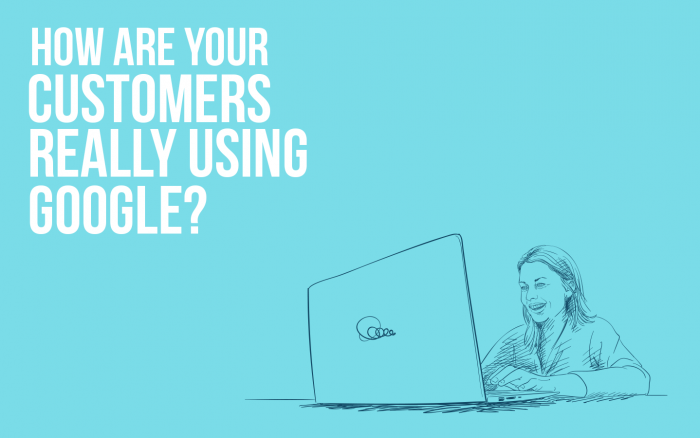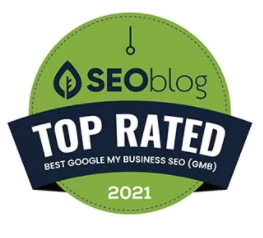Tailoring your small business’ web presence to the way your potential customers are using Google can help them find you – instead of your competition.
It’s no secret that the internet is the most popular way for people to find what they’re looking for—especially when it comes to local and service area businesses. If you’re looking for a shoe store, you’re not going to hop in the car and drive around until you find one! Instead, you’re going to type “shoe stores near me” into Google and check out the results.
It may be common knowledge that customers are using Google to find your business, but understanding how they’re using the search engine specifically can go a long way towards optimizing your online presence.
Here are five of the ways potential customers are using Google to find businesses, products, and services.
Hyperlocal Search Results 
According to Search Engine Land, up to 63% of business searches done online can be considered “hyperlocal.” This means searches that are qualified by a geographical statement such as with a city or zip code, or even the words “near me.” Knowing this, businesses with a geographically-defined service area can better market their services by being clear about this service scope.
Review Skimming
Reviews dictate a big part of how people find what they’re looking for online. If someone Googles a shoe store in their area, there’s likely going to be more than 1-2 results. Many people will automatically use reviews as a way to narrow their prospects. In fact, roughly 85% of people value online reviews as much as a formal recommendation! Even those personal, word-of-mouth recommendations are happening online these days. Having a collection of positive reviews to boost your surface appearance can help your local business survive cuts made when customers skim reviews.
Mobile Search Continues to Dominate
Everyone has a smartphone in their pocket these days, which means performing searches on-the-go. This can and should dictate the way local businesses market themselves. From having their business’ name, address and phone number (NAP) profile complete to optimizing their site for mobile users, it all adds up to giving searchers a positive mobile experience. Being able to connect with mobile searchers means appealing to someone who may be nearby or ready to make a decision about choosing your business.
Voice Search is on the Rise
“Hey Siri” and “Alexa?” are becoming common phrases people are saying each and every day. As it turns out, as many as 25% of all Bing searches are voice-generated queries! How does your business optimize its online presence for voice? Concentrate on keyword optimization for 2-5 words—roughly the length of the average voice query. When people ask “hey Siri, find me a shoe store in Rutland, VT” you want to make sure you’re optimized for “shoe store” and “Rutland, VT,” so Siri will know exactly where to find you.
Make it Easy to Get in Touch – Optimize Your NAP
Finally, it’s important to recognize that most mobile searches are one-and-done. A search for “shoe store” on mobile needs to be accompanied by results that display everything: including address, phone number, website and business hours. This means filling out your business’ NAP completely and making sure to avoid some of the most common local listings mistakes that small businesses make.
Understanding Search Intent Can Help You Reach More Customers
Knowing the intent of your customers when they search for you plays a big role in optimizing your website. If you know how they’re searching or what they’re looking for, you can tailor your business’ web presence around these aspects. The result is a website and local listings that are more attuned to the needs of your customers.










